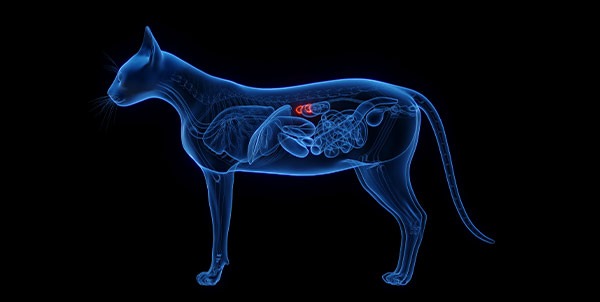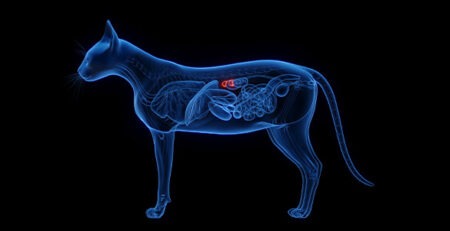Conn cat syndrome: symptoms, diagnosis, treatment
Conn’s syndrome or hyperaldosteronism: is an endocrine disorder that occurs when the adrenal glands of dogs and cats produce hormones in abnormal amounts compared with standards.
Specifically, Conn’s syndrome in cats is the result of excessive aldosterone secretion.
What is aldosterone
Aldosterone is a hormone whose main function is to control the balance of potassium, sodium and sugar in the blood: by regulating water and salt turnover, this hormone promotes potassium elimination.
However, if aldosterone levels are high, sodium reabsorption and excessive potassium loss by the kidneys also increase.
High sodium levels(hypernatremia) and loss of potassium(hypokalemia) result in an electrolyte imbalance that manifests in dogs and cats through a variety of symptoms.
The symptomatology of Conn’s syndrome or disease
Conn’s disease is rare in dogs but is quite common in cats, although it is often underdiagnosed.
The most common symptomatology in cats is the typical symptoms of potassium deficiency viz:
- weakness
- Downward bending of the head and neck (ventroflexion)
- stiffness of the forelimbs
- lethargy and depression
- difficulty in breathing
Hypertension, on the other hand, can cause intraocular hemorrhage but also blindness due to retinal detachment.
Excessive excessive thirst resulting in abnormal urine production, weight loss, diarrhea, and increased abdominal volume can also be seen in the cat.
Primary and secondary hyperaldosteronism
Hyperaldosteronism can be either primary (also called primary) or secondary.
It is primary when caused by a neoplasm of the adrenal glands (adenoma or carcinoma): this is the most common form in older cats.
On the other hand, secondary hyperaldosteronism is said to occur when it is a direct result of another preexisting condition namely heart failure, hepatopathy or nephropathy.
If hyperaldosteronism is suspected in a cat, the veterinarian will perform a blood and urine test and an ultrasound of the abdomen to evaluate the adrenal glands.
Diagnosis and treatment for Conn’s syndrome
If the Veterinarian identifies an adrenal gland tumor, the treatment of choice is surgical removal as long as there is no metastasis especially to the lungs.
Alternatively, if the cat cannot undergo surgery, the alternative is drug therapy aimed primarily at reducing hypertension through supplemental administration of potassium and antihypertensives.
Prognosis in case of Conn’s syndrome
In case of unilateral nonmetastasized neoplasm treated by surgical approach, the prognosis is favorable and there is remission of symptoms.
In contrast, drug therapy is a good option for the long-term management of secondary and primary noncancer hyperaldosteronism.
The course and prognosis of primary hyperaldosteronism depend largely on how early the disease is recognized and treated.
Therefore, if there is any symptom or behavioral abnormality in your cat, you should immediately report it to your trusted veterinarian so that he or she can give it a complete check-up.
To refer your cat for a checkup, contact the veterinary doctors on our staff who are always available to you.
We would also like to remind you that in case of need and urgency Clinica La Veterinaria is always open h24 every day including holidays and with First Aid service from 8 pm to 8 am.










